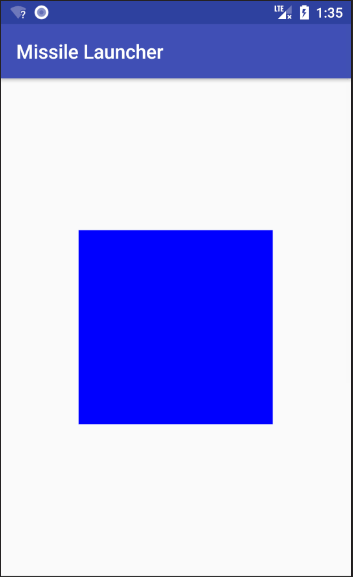Custom view … overrides onTouchEvent but not performClick
I get this warning (from the question title) in a custom Android view I am developing.
Why do I get warned? What\'s the logic behind it i.e. why is it a good
pra
-
This warning tells you to override
performClick@Override public boolean performClick() { // Calls the super implementation, which generates an AccessibilityEvent // and calls the onClick() listener on the view, if any super.performClick(); // Handle the action for the custom click here return true; }But it is not compulsory. As I have created a custom knobView and it is working quite good where I am also facing this warning.
讨论(0) -
The
onTouchEventis not called by some Accessibility services, as explained by clicking the "more..." link in the warning details.It recommends that you override
performClickfor your desired action, or at least override it alongside youronTouchEvent.If your code is more fitting for the touch event, you can use something similar to:
@Override public boolean performClick() { if (actionNotAlreadyExecuted) { MotionEvent myEvent = MotionEvent.obtain(long downTime, long eventTime, int action, float x, float y, int metaState); onTouch(myView, myEvent); } return true; // register it has been handled }More information on accessing touch events through code is available at trigger ontouch event programmatically
讨论(0) -
What's the purpose?
In some of the other answers you can see ways to make the warning go away, but it is important to understand why the system wants you to override
performClick()in the first place.There are millions of blind people in the world. Maybe you don't normally think about them much, but you should. They use Android, too. "How?" you might ask. One important way is through the TalkBack app. It is a screen reader that gives audio feedback. You can turn it on in your phone by going to Settings > Accessibility > TalkBack. Go through the tutorial there. It is really interesting. Now try to use your app with your eyes closed. You'll probably find that your app is extremely annoying at best and completely broken at worst. That's a fail for you and a quick uninstall by anyone's who's visually impaired.
Watch this excellent video by Google for an introduction into making your app accessible.
- Developing Accessible Apps for Blind and Visually-Impaired Users
How to override
performClick()Let's look at a example custom view to see how overriding
performClick()actually works. We'll make a simple missile launching app. The custom view will be the button to fire it.
It sounds a lot better with TalkBack enabled, but animated gifs don't allow audio, so you will just have to try it yourself.
Code
activity_main.xml
<?xml version="1.0" encoding="utf-8"?> <RelativeLayout xmlns:android="http://schemas.android.com/apk/res/android" android:layout_width="match_parent" android:layout_height="match_parent"> <net.example.customviewaccessibility.CustomView android:layout_width="200dp" android:layout_height="200dp" android:contentDescription="Activate missile launch" android:layout_centerInParent="true" /> </RelativeLayout>Notice that I set the
contentDescription. This allows TalkBack to read out what the custom view is when the user feels over it.CustomView.java
public class CustomView extends View { private final static int NORMAL_COLOR = Color.BLUE; private final static int PRESSED_COLOR = Color.RED; public CustomView(Context context) { super(context); init(); } public CustomView(Context context, @Nullable AttributeSet attrs) { super(context, attrs); init(); } public CustomView(Context context, @Nullable AttributeSet attrs, int defStyleAttr) { super(context, attrs, defStyleAttr); init(); } private void init() { setBackgroundColor(NORMAL_COLOR); } @Override public boolean onTouchEvent(MotionEvent event) { super.onTouchEvent(event); switch (event.getAction()) { case MotionEvent.ACTION_DOWN: setBackgroundColor(PRESSED_COLOR); return true; case MotionEvent.ACTION_UP: setBackgroundColor(NORMAL_COLOR); // For this particular app we want the main work to happen // on ACTION_UP rather than ACTION_DOWN. So this is where // we will call performClick(). performClick(); return true; } return false; } // Because we call this from onTouchEvent, this code will be executed for both // normal touch events and for when the system calls this using Accessibility @Override public boolean performClick() { super.performClick(); launchMissile(); return true; } private void launchMissile() { Toast.makeText(getContext(), "Missile launched", Toast.LENGTH_SHORT).show(); } }Notes
- The documentation also uses an
mDownTouchvariable which appears to be used to filter out extra touch up events, but since it isn't well explained or strictly necessary for our app, I left it out. If you make a real missile launcher app, I suggest you look more into this. - The primary method that launches the missile (
launchMissile()) is just called fromperformClick(). Be careful not to call it twice if you also have it inonTouchEvent. You will need to decide exactly how and when to call your business logic method depending on the specifics of your custom view. Don't override
performClick()and then do nothing with it just to get rid of the warning. If you want to ignore the millions of blind people in the world, then you can suppress the warning. At least that way you are honest about your heartlessness.@SuppressLint("ClickableViewAccessibility") @Override public boolean onTouchEvent(MotionEvent event) { ... }
Further study
- Accessibility overview
- Build accessible custom views (especially the Handle custom touch events section)
- Make apps more accessible
讨论(0)
- 热议问题

 加载中...
加载中...